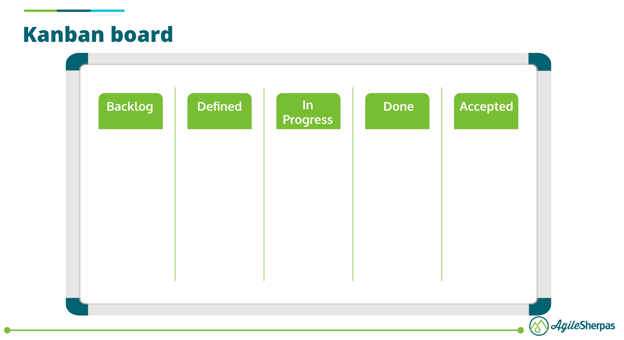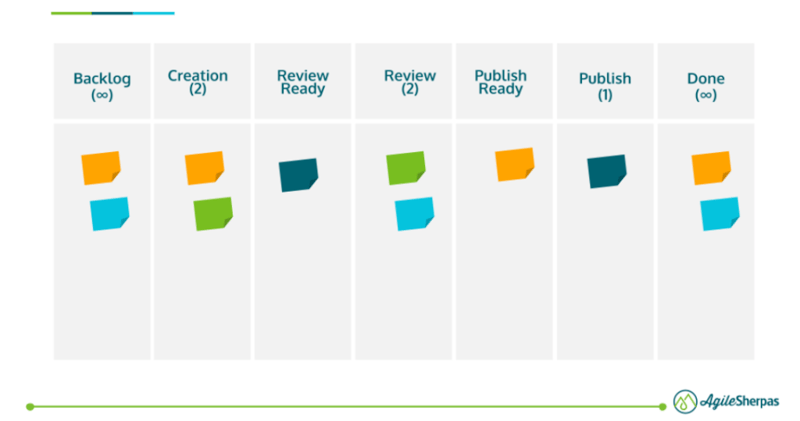-
- marketing agility
- Teams
- Organizations
- Education
- enterprise
- Articles
- Individuals
- Transformation
- Solution
- Leadership
- Getting Started
- business agility
- agile management
- going agile
- Frameworks
- agile mindset
- Agile Marketing Tools
- agile marketing journey
- Agile Marketers
- organizational alignment
- People
- Selection
- (Featured Posts)
- agile journey
- Metrics and Data
- Kanban
- strategy
- Resources
- Why Agile Marketing
- agile project management
- self-managing team
- Meetings
- agile adoption
- scaled agile marketing
- tactics
- Scrum
- scaled agile
- agile marketing training
- agile takeaways
- Agile Meetings
- agile coach
- Agile Leadership
- Scrumban
- enterprise marketing agility
- state of agile marketing
- team empowerment
- agile marketing mindset
- agile marketing planning
- agile plan
- AI
- Individual
- Intermediate
- Team
- Videos
- kanban board
- Agile Marketing Terms
- agile marketing
- agile transformation
- traditional marketing
- FAQ
- agile teams
- Agile Marketing Glossary
- CoE
- agile
- agile marketer
- agile marketing case study
- agile marketing coaching
- agile marketing leaders
- agile marketing methodologies
- agile marketing metrics
- agile pilot
- agile sales
- agile team
- agile work breakdown
- cycle time
- employee satisfaction
- marketing value stream
- marketing-analytics
- remote teams
- sprints
- throughput
- work breakdown structure
- News
- Scrumban
- agile brand
- agile marketing books
- agile marketing pilot
- agile marketing transformation
- agile review process
- agile team charter
- cost of delay
- hybrid framework
- pdca
- remote working
- scrum master
- stable agile teams
- startups
- team charter
- team morale
- user story
- value stream mapping
- visual workflow

Agile I’ve said it before and I’ll say it again: marketing and agility go together like peanut butter and chocolate.
Agile marketers report faster campaign delivery, better ROI on their marketing activities, better alignment with business objectives, and happier team members (among many other things).
Pair those benefits with marketers’ common inability to say no to incoming work, our multitasking mania, and the ever-growing list of channels and tactics we need to master, and it’s no wonder most marketers will jump at the chance to optimize their process.
But sometimes going Agile isn’t up to us.
What happens when you need to convince someone else that agility is the way forward?
What if someone doesn’t believe that peanut butter and chocolate are best buds? How do you convince your stakeholders to support the earliest phases of your Agile journey?
Put simply, you act like a good marketer. You talk about what’s in it for them.
(Or, in the peanut butter/chocolate example, just give them a Justin’s Dark Chocolate Peanut Butter Cup.)
Here are three ways to help your stakeholders realize that Agile marketing is just as good for them as it is for you by answering some of their most commonly raised objections.
Why Stakeholder Buy In Matters in Agile Adoption
Marketing doesn’t exist as a standalone department; we’re crucial intermediaries between the products and services our organizations produce and the people who need those things.
We connect people and stuff in very important ways.
Sales, product development, customer service, legal and compliance -- all of these groups (and more) play a role in our ability to be this bridge.
Marketing’s work impacts them too, so if we run off and start changing our processes willy nilly, they’re likely to feel resentful. Resentful people typically don’t add a lot of value to a system, so we need to avoid this outcome whenever possible.
If the breakdown is bad enough, you might even encounter a stakeholder who deliberately holds things up. Their slow down can make it appear that Agile ways of working aren’t actually helping and undermine your efforts.
Agile frameworks were originally developed to help deliver value to customers faster. If marketers are using them for this same reason (as we should be), we’ll start by recruiting internal partners, because marketing isn’t an island.
We need a group effort if our hard-won process improvements are actually going to positively impact our audience and the organization’s bottom line.
Objection 1: Nobody Knows What Marketing is Doing
If you work closely with internal business units or sales, or even product development teams, chances are you’ve heard this lament.
Many stakeholders feel that marketing is a black hole: they send work requests in, and never see them again.
Of course, it’s not that we aren’t working over in marketing. Usually we’re working on approximately 8,753 things. But nobody knows what they all are.
If this is you, you’ll be able to use Agile as the answer to this objection very easily.
One of the most central values of any Agile system is transparency and visibility. We go to great lengths to make sure everybody inside and outside the team knows what’s going on.
Through the 1-2 punch of a prioritized backlog and a visualized workflow, it’s clear what the team is tackling now, what’s delayed, and what’s up next in the queue. Anybody can check on these tools at any time and get insight into how marketing is spending its time.
Digital tools take these capabilities to the next level, allowing us to show how much of a project has been complete, attach relevant documentation, assign due dates, tag stakeholders for feedback, etc.
For bonus points, you can also invite stakeholders to Agile meetings, including daily standup, so they never have cause to wonder what’s up in marketing again:
Objection 2: Everything Takes Too Long
Tough truth time: the more things we work on at the same time, the longer they all take. To deliver work faster, we have to do less.
It’s counterintuitive, but painfully true.
So if you’ve got stakeholders who wonder what the heck is taking you so long to get their request processed, you can hold up Agile ways of working as the shining solution.
Agile forces us to focus on the highest value work, concentrate our effort on it until it’s done, and only then take on new work.
There are two options available for making this happen: the sprint and WIP limits.
Speeding Up Delivery Using Sprints
Sprints are simply short timeboxes during which a team of marketers works together to complete a short list of high value tasks. After a sprint concludes, there should be a nice chunk of work -- maybe a complete project, or at least a valuable piece of one -- to show off.
While typically used as part of the Scrum framework, you can use the sprint mechanism less rigidly to create the focused effort needed to speed up delivery.
First you’ll need a prioritized backlog, because it’s vital to see the full scope of potential work before you choose what belongs in your sprint. Once you’ve got a clear picture of everything you could be doing, get the team together and have them decide how much of it they can really get done in a sprint.
The work they choose will become their sprint backlog, a.k.a. everything they’ll be doing over the course of the sprint. (That means everything, including recurring “business as usual” tasks.)
Keep your sprint short (two weeks is the standard length), because you don’t want to make too many changes to your sprint backlog once it’s set. Ideally nothing goes in and nothing comes out, but there may be times when you need to make small adjustments to the sprint backlog.
If that happens, make sure it’s a trade off; a new request replaces something the team had committed to do. If you just keep adding more stuff to the sprint backlog, you’ll end up right back at the place where everything takes too long and nothing will actually get done in the sprint.
Speeding Up Delivery Using WIP Limits
Sprints work best when the team can predict with relative accuracy how their next couple of weeks will go. They need to confidently set up -- and stick to -- the sprint backlog, or the whole sprint thing just doesn’t work.
If you’re among those marketers who can’t even tell what you’ll be doing by the end of the day, WIP limits may be your better option for doing more in less time.
Work in Progress (WIP) limits force us to stop starting and start finishing various activities.
For them to work, an individual or team needs a visualized workflow in the form of a kanban board:

This is a super simple version, yours might look quite different, but the point is that it shows what’s going on as work marches from the backlog to done. When we visualize work this way, we often discover that our “In Progress” column overflows, while very few cards make it across the finish line.
WIP limits help combat that by setting a hard ceiling on how many items can be in any stage of the workflow:

This board has a few more stages so you can see how WIP limits work. There’s a WIP limit of two on creation, so we can’t be creating any more than two things at a time. The same goes for review, while publish has a WIP limit of just 1, probably because we have less people on the team who can tackle those kinds of tasks.
Individual WIP Limits
If you’re using WIP limits as an individual, your magic number is likely to be two. Don’t work on more than two things at once.
In other words, if you’re building slides and filling the social media queue for the week, you can’t also start on a new piece of sales enablement until one of those things is done.
Teams can find their starting WIP limits by doubling the number of people who can work in any given stage, and then working their way down to a number that pushes them to complete work quickly.
So if we have two people who can work in the create phase above, we’d start our WIP limit at four and slowly go downwards from there.
Objection 3: My Project Matters the Most
Our final objection to overcome is the squeaky wheel syndrome: every stakeholder (or project manager, or business unit leader) believes their project is the most important, and they’ll hound marketing team members to do their project NOW.
Wanting to be helpful colleagues, many marketers respond to these requests right away.
This leads to the unpleasant feeling of professional whiplash as we turn from one piece of work to the next, depending on who’s yelling the loudest. Sadly, this hurts everybody.
Stakeholders don’t get their work in a timely manner, because the more we work on the longer it all takes. When we careen from one thing to the next without finishing what we started, the timelines all balloon.
It’s also bad for the marketers, because we don’t get the satisfaction of finishing something, and feel pulled in one hundred different directions.
Once again, Agile marketing can help.
The prioritized backlog forces us to make hard decisions. We have to choose between projects and activities to create focused effort; not everything can be the top priority.
Combining the backlog with regular planning sessions where you get your stakeholders together and have them hash out the real priorities among their projects is a game changer. Typically one stakeholder has no idea what the other ones are asking marketing to do, so they can’t be a helpful partner in prioritization.
Getting everyone together and showing them what’s on deck allows them to collaborate in choosing the highest value work. They will then (hopefully) be less likely to squeak at the team constantly and let them attack the high value work until it’s completed.
Note: you may need a senior marketing leader to attend these sessions and be the final arbiter if your stakeholders can’t agree.
What to Do AFTER You Get Buy In
Whatever objection was the biggest for you, tailor your early Agile efforts to address it. Let’s recap what that looks like:
Objection: Nobody knows what marketing is doing
First actions: Build a prioritized backlog and pair it with an up to date kanban board. Direct any and all status update requests to these new tools.
Next steps: Start incorporating tools for focused effort, like sprints or WIP limits, to push more work through the board in a shorter amount of time.
Objection: Marketing takes too long
First actions: Build your backlog and then implement sprints, if you can predict your work for the next few weeks, or WIP limits if you can’t, to create forced focus on high value work within the marketing team.
Next steps: Track common Agile marketing metrics like throughput and cycle time to show how much more productive your team is getting over time. Bonus points if you can tie this increase in productivity to marketing outcomes.
Objection: My project is the most important
First actions: Build your prioritized backlog (sense a theme here?) and bring your stakeholders together to agree on a single set of priorities for the marketing team. Refer to these priorities anytime squeaky wheel syndrome rears its ugly head.
Next steps: Incorporate “business as usual” work into the backlog along with larger projects to get the full picture of the scope of the team’s responsibilities.
The drive for agility doesn’t have to be an “us versus them” situation. By putting on our marketing hats, we can focus on answering our stakeholders’ common objections through new Agile ways of working.
Then we become partners in process improvement, rather than adversaries.
Topics discussed

Andrea Fryrear is a co-founder of AgileSherpas and oversees training, coaching, and consulting efforts for enterprise Agile marketing transformations.
Improve your Marketing Ops every week
Subscribe to our blog to get insights sent directly to your inbox.



